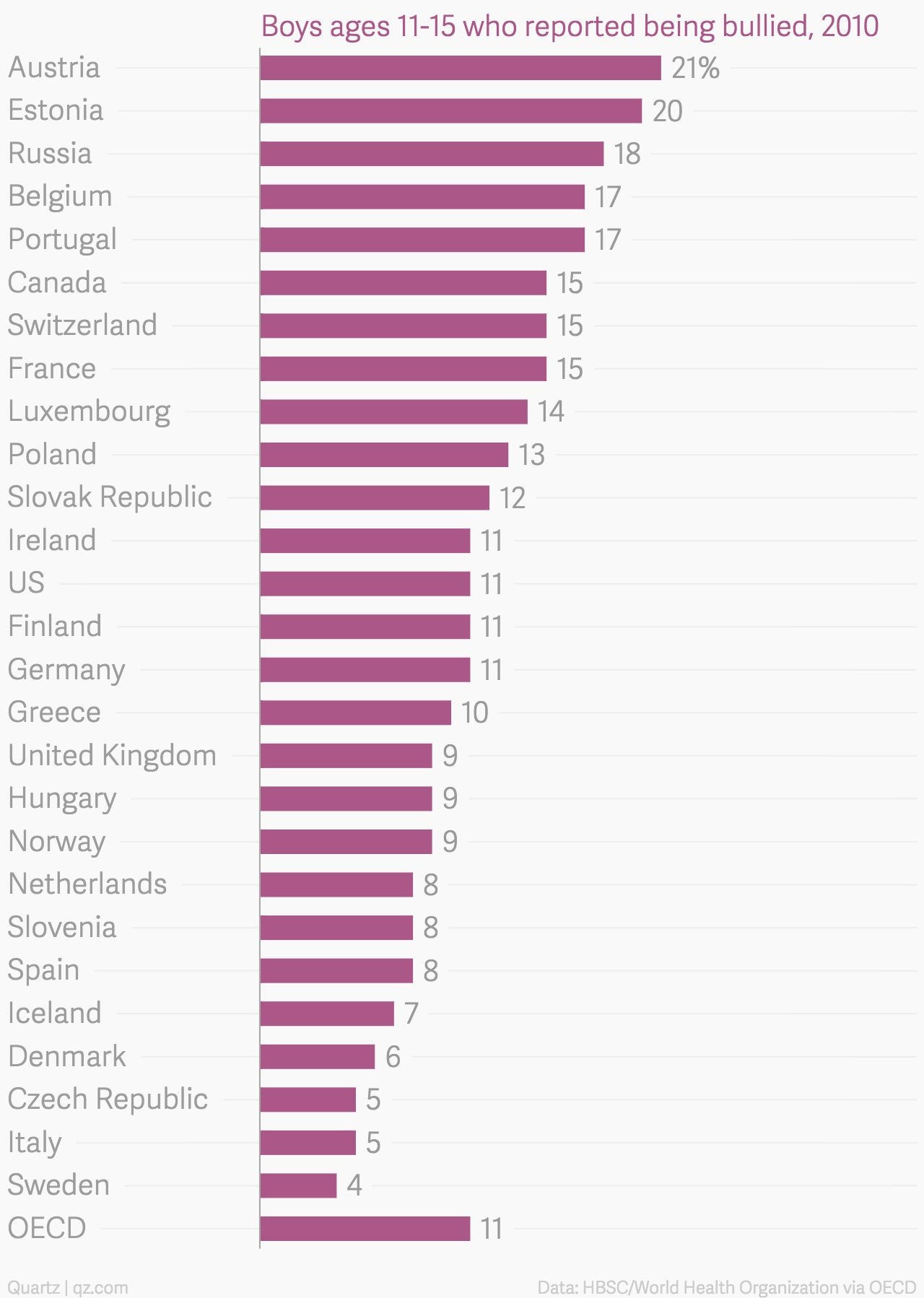Austria has the most bullying in the Western world, Sweden has the least
In Europe and North America, boys report being bullied the most in Austria and the least in Sweden, according to a recent report (pg. 20) from the Organisation for Economic Cooperation and Development.


In Europe and North America, boys report being bullied the most in Austria and the least in Sweden, according to a recent report (pg. 20) from the Organisation for Economic Cooperation and Development.

The OECD researchers used data from a 2009-2010 Health Behavior In School-aged Children and World Health Organization survey (pdf, pg. 191) of North American and European countries. The survey asked boys and girls aged 11, 13, and 15 whether they had been bullied in school at least twice in the last few months, with this definition of “bullying”:
We say a student is being bullied when another student, or a group of students, say or do nasty and unpleasant things to him or her. It is also bullying when a student is teased repeatedly in a way he or she does not like or when he or she is deliberately left out of things. But it is not bullying when two students of about the same strength or power argue or fight. It is also not bullying when a student is teased in a friendly and playful way
The OECD average for boys reporting bullying was 11% (Ireland, the US, Finland, and Germany were at this average). One in five Austrian boys said they were bullied, the highest rate, versus only 4% in Sweden.
Girls in almost all the countries surveyed reported significantly lower rates of bullying than boys. The OECD report notes, however, that this was a 2009-2010 survey, so it might not capture the extent of cyberbullying that teens face today. A 2013 study of bullying (pdf, pg. 56) among Swedish youth found that girls are more likely to face cyberbullying.
The fully HBSC study, published in 2012, adds some nuance to these numbers. For example, reports of bullying decrease with age, from an average of 13% of 11-year-olds across the countries to an average 9% of 15-year-olds.
Teens do seem to bully more—or admit more to being bullies—as they grow up. The survey asked them whether they bullied others, and that percentage increased with age, from 8% of 11-year-old boys and girls to 12% of 15-year-olds. Another factor was family affluence, which made children in some countries less likely to report being bullied.